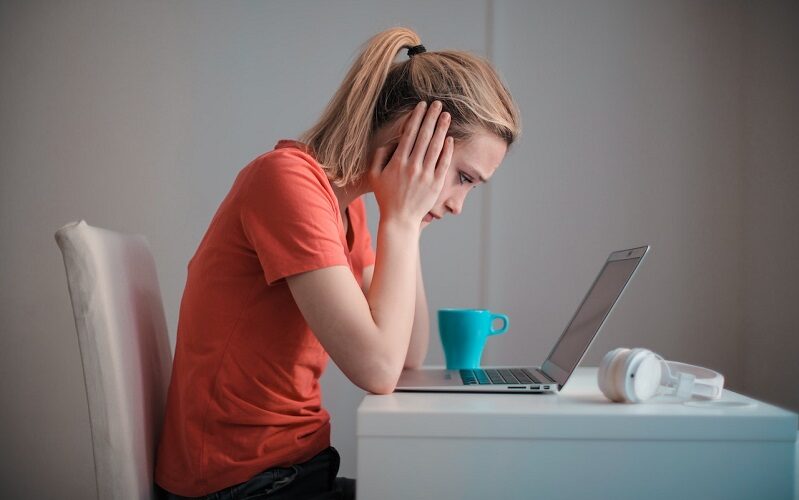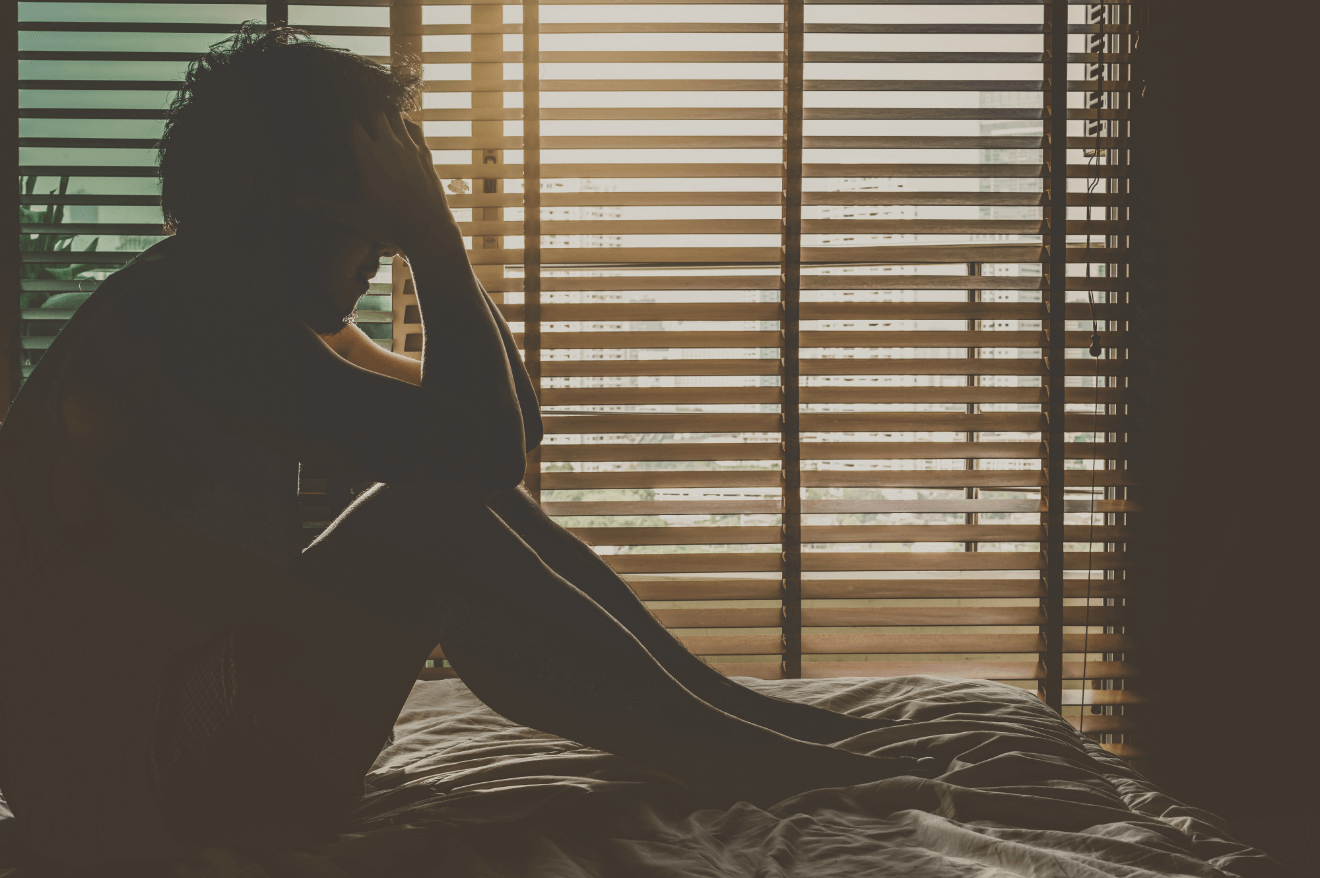Have you been feeling glum, unhappy, or out of sorts lately? Don’t worry – it’s normal to feel sad sometimes. When you’re down but don’t know why, it’s called feeling blue.
It’s possible to feel blue without any obvious or apparent cause, but these low moods usually happen for a reason. While it can be challenging to cope with any sad feeling, thankfully, there are plenty of ways to deal with the blues. Read on to learn more about the blues and find ways to overcome them.
What Do the Blues Feel Like?
A “blue feeling” is a common way we describe gloominess or sorrow. For example, someone feeling blue might say they feel “mopey” or “down in the dumps.” It’s common to cry more than usual or struggle with motivation when blue.
Although people with the blues might describe themselves as depressed, the blues and depression actually aren’t the same thing. However, if you’ve been in a low mood for a while, and your feelings don’t seem to be going away, your sadness might be a symptom of depression. It’s important to understand the difference between the two.
Feeling the blues vs depression
How can you tell the difference between a blue feeling and depression? When people feel blue, it’s usually for a reason. For example, someone might feel blue if they miss out on an opportunity, have a disagreement with someone they’re close to, or are unhappy with their life’s state.
By contrast, while stressful events can trigger depression, people who are clinically depressed often feel unhappy even when their life is going well.
If you’re blue, fun activities or spending time with friends might be an effective way to lift your spirits. Depression, however, can cause you to lose interest in things you once thoroughly enjoyed (a symptom commonly known as anhedonia). When you’re depressed, doing something fun might not change your mood at all. In fact, depression can make it hard to find the motivation to socialize or do anything in the first place.
“Depression is stronger than feeling the blues. When depression is present, it’s more difficult, and sometimes nearly impossible, to stay motivated or complete our daily activities. Conversely, feeling the blues is more of a state of sadness, but we’re still able to perform our daily activities.”
– Talkspace therapist Cynthia Catchings, LCSW-S
Sadness is one of the more common symptoms of depression everyone knows about, but there are other symptoms, too. Additional depressive symptoms can include difficulty concentrating, fatigue, and thoughts of suicide. Symptoms of depression can be severe and have a significant impact on day-to-day functioning.
Knowing when to get professional help
A passing feeling of sadness isn’t necessarily a cause for concern. However, if those feelings don’t seem to fade, you may want to talk to a mental health professional for treatment. You should seek help if you’re having thoughts of self-harm or suicide or if your sadness interferes with your ability to carry out everyday responsibilities. For more help with identifying when you need help, learn the differences between sadness and depression.
Is Feeling the Blues Normal?
Unpleasant emotions are a normal part of life — everyone feels the blues at one point or another. Feeling blue isn’t unusual or abnormal, and a low mood isn’t necessarily bad. People typically feel blue for a reason, so figuring out why you’re feeling down could help you make positive changes.
There’s nothing strange about the blues, but that doesn’t mean you should wallow in your sadness. It’s impossible to always be happy, but when you’re feeling down, it’s important that you try to cheer yourself up.
– Talkspace therapist Cynthia Catchings, LCSW-S
“It’s normal to feel the blues. As emotional beings, we respond to life changes and adjustments and cannot always be happy. But as normal as it can be, it’s important to monitor our feelings through journaling or mindfulness activities to be able to track how often and how much the blues may be affecting us.”
How to Beat the Blues
Although it’s OK to feel the blues from time to time, if you’re truly unhappy and the feeling isn’t getting better, you should look for ways to cope with your feelings and improve your mood. The following are some of the best ways we know to fight back when feeling the blues.
1. Look for ways to laugh
They say laughter is the best medicine, and that adage holds when it comes to the blues. Laughter has a therapeutic effect and can increase dopamine and serotonin levels.
Whether you watch a comedy, spend time with your funniest friends, or look at silly pictures, try to find ways to bring more laughter into your life. When you’re laughing, your blue feelings can start to feel further away.
2. Spend time outside
Spending time in nature can have a positive impact on your mental health. Natural environments can be therapeutic, and research shows that being outside can lift mood and reduce stress.
Being outdoors also means spending more time in the sun. Sunshine can boost serotonin levels and help you sleep more deeply at night.
3. Find ways to let your feelings out
Bottling up how you feel won’t make things better. Instead, expressing your emotions can help you work through your feelings and find ways to feel better.
It may be helpful to share your feelings with a family member, friend, or therapist. Journaling for your mental health or finding creative activities can also be healthy outlets for your emotions. Finally, acknowledging and accepting the blues will usually help you feel better.
4. Make lifestyle changes
Studies consistently show that keeping a daily routine can positively impact your mental health. If you’ve been down, try to make healthy changes that improve your outlook on life.
Whether you get more exercise, improve your diet, change your social circle, or improve your sleep hygiene, these small shifts can enhance your mood and well-being. People sometimes go through the blues because they’re in a rut, and healthy habits and routines might be just the change you need.
5. Take care of yourself
It can be hard to show yourself compassion or prioritize your own needs when you’re sad. Make sure you don’t neglect yourself when you’re feeling gloomy. Try treating yourself like you’d treat a friend who’s feeling down.
Every day, make a point of doing something you enjoy. Do things that refresh you, like taking a long, hot shower, going for a walk, meeting up with friends, or taking a mental health day off work. When you take better care of yourself, you’ll likely start to see an improvement in your mood.
Fight the Blues with Talkspace
There are plenty of ways to cope with the blues, but if your sad feelings aren’t going away, it might be time to seek professional help. Talkspace is an online therapy platform that lets you quickly connect with a licensed therapist. If you’re looking for online therapy that accepts insurance, get connected at Talkspace to check your eligibility.
Whether you’re feeling blue or dealing with a type of depression, sadness can make you feel unmotivated. Talkspace is a convenient way to get support for emotions you’re struggling with. Reach out for help today to beat the blues and learn how to be happy again.
Sources:
- Kessler RC. The effects of stressful life events on depression. Annual Review of Psychology. 1997;48(1):191-214. doi:10.1146/annurev.psych.48.1.191. https://pubmed.ncbi.nlm.nih.gov/9046559/. Accessed November 17, 2022.
- Yim JE. Therapeutic benefits of laughter in mental health: A theoretical review. The Tohoku Journal of Experimental Medicine. 2016;239(3):243-249. doi:10.1620/tjem.239.243. https://pubmed.ncbi.nlm.nih.gov/27439375/. Accessed November 17, 2022.
- Pearson DG, Craig T. The great outdoors? exploring the mental health benefits of Natural Environments. Frontiers in Psychology. 2014;5. doi:10.3389/fpsyg.2014.01178. https://www.ncbi.nlm.nih.gov/pmc/articles/PMC4204431/. Accessed November 17, 2022.
- Hou WK, Lai FTT, Ben-Ezra M, Goodwin R. Regularizing daily routines for mental health during and after the COVID-19 pandemic. Journal of Global Health. 2020;10(2). doi:10.7189/jogh.10.020315. https://www.ncbi.nlm.nih.gov/pmc/articles/PMC7535346/. Accessed November 17, 2022.
Talkspace articles are written by experienced mental health-wellness contributors; they are grounded in scientific research and evidence-based practices. Articles are extensively reviewed by our team of clinical experts (therapists and psychiatrists of various specialties) to ensure content is accurate and on par with current industry standards.
Our goal at Talkspace is to provide the most up-to-date, valuable, and objective information on mental health-related topics in order to help readers make informed decisions.
Articles contain trusted third-party sources that are either directly linked to in the text or listed at the bottom to take readers directly to the source.





